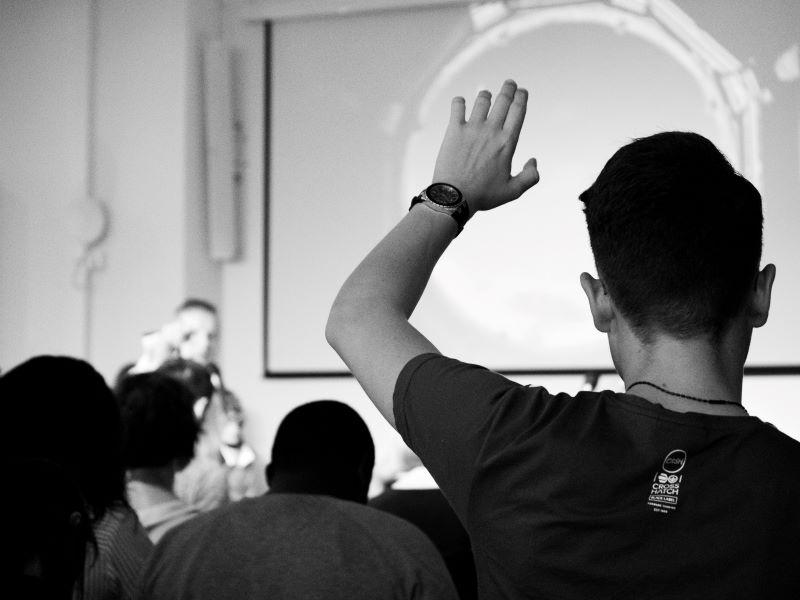There was no road map for universities on how to manage the Covid journey last spring. Some leaders tried to bluff their way through with “positivity”, while others were arrogant, convinced they were right about their strategic decisions. The adaptive challenges presented by the pandemic humbled both groups. But now, based on past lessons, we can build a powerful map for moving forward.
Having been involved with more than 120 campus strategic planning processes over the past 30 years, I believe the pandemic will dramatically change the way we conduct planning on campuses. We will have to be quicker, smarter and more agile. We cannot expect to return to “normal” and apply old lessons and practices to the complex challenges and unknowns that face us in the future. That will not work.
So how can we distill lessons learned from our shared pandemic experiences?
There are challenges unique to higher education that campus stakeholders and strategic planners need to be aware of if they are to be effective moving forward. But by using a planning design that focuses on the “lived” and distinctive values of a campus, institutional leaders can create a beacon to guide people through difficult, complex and courageous decisions in the future.
Every institution should conduct a series of “After Action Reviews” (AARs) on the strategic decisions made during the crisis, to unpick what worked and what did not. The five core AAR questions are similar to:
1) What did we set out to accomplish?
-
What actually happened?
-
What went well?
-
What could we have done better?
-
What lessons learned can we apply to future projects or initiatives (and maybe share with others)?
Don’t be fooled by the simplicity of these questions; an AAR is a challenging exercise to implement properly. It will take courage to unpack the successes and more especially the failures leaders experienced over the past year. But both will provide important clues and we need to extract the lessons from these difficult experiences and share them across campus to make everyone smarter. Ideally, we would organise a national database on these hard-earned lessons.
The six key challenges for higher education
1) Define consensus: It is important to define what “consensus” means on your campus. This word gets bandied about a lot in higher education, and this is a mistake. A consensus mentality is a wonderful aspiration, even a noble one. But it can be used as a weapon to control, stall, and even stop important decisions from moving forward. Campuses need an agreed and clear definition of “consensus” for their institution, which can be widely shared. Then clarify when you need consensus to make an important decision, because it cannot be for everything.
2) Reward the ‘doers’: Recognition and reward often goes to the big picture thinkers and “visionaries” who are a dime a dozen. We need to identify and recognise the “doers” on campus who actually see plans through and are too often underappreciated. If we had a monthly “Implementation Champion” or “Doer Award”, on our campuses, it could be a game changer. It would drive an implementation mentality and shape the campus culture in constructive ways. Big ideas are nice, but getting things done is what really matters, and we desperately need this going forward
3) Refine over time: Most people, especially faculty, have high standards and expectations, but often the search for the perfect plan or solution soaks up too much time, attention and money. We need to find approaches and solutions that can be quickly rolled out and enhanced over time. Most importantly, these plans need the flexibility to adapt quickly to an unpredictable environment.
4) Manage meetings: Higher education relies on too many meetings, most of which are ineffective and not a good use of staff time. We assume leaders on campus know how to plan, design and facilitate a productive meeting. Unfortunately, most do not. We need to train, teach and coach managers among faculty and administrative staff on how to conduct a great meeting. If we can improve the quality and efficiency of meetings across campuses, the opportunity costs regained will be priceless.
5) Set decision rules: Clarify the “decision rules” so that everyone understands who decides what and what level of input and influence they have in institutional decisions. When decision rules are fuzzy, implementation and action falters because people are unsure what they are allowed to do and what level of freedom they can take. The board, senate and senior leadership all need to work from the same framework on how decisions will be made regarding planning and implementation efforts and communicate this widely to everyone on campus.
6) Build relational capital: Relational capital, resting on the qualities of personal relationships such as trust, obligations, respect and even friendship between campus stakeholder groups is the key factor in accomplishing things and moving a campus forward. Think about how to build authentic relationship capital without being seen as “touchy-feely”, which could be off-putting for some people.
Planning design that works: Tell me a story
This planning design helps identify the lived and distinctive values of an institution while building relational capital at the same time. It is called “tell me a story” and can work with large groups of 50 to 60 participants.
Start by organising them into mixed groups, made up of faculty, staff, administrators and students, with about six participants in each, resulting in about 10 groups. Ask each person to share a story in their small group that captures the essence of the campus culture and lived values at its best.
This could be a time when a faculty member went out of their way to support a struggling student; or when the student affairs team stepped in to help some students suffering with mental illness and created a weekly support group; or when the campus foundation created a “last mile” tuition program for students facing financial challenges. You get the idea.
There are hundreds of positive stories on every campus. The problem is we rarely share and elevate them. Once participants have shared their story, ask the groups to identify one story that captures the essence of all the other stories. Then each group shares their one story with the larger group. This all takes less than an hour and can be done with food and refreshments. I call these “chews and chats,” and they are invaluable.
The higher education sector has demonstrated exceptional resilience this past year but the response to Covid was far from perfect. Let’s celebrate the achievements but also learn from the failures to do better as we face unknowns going forward.
In the words of the Dalai Lama: “When you lose, don’t lose the lesson.”
Patrick Sanaghan is an organisational consultant and president of The Sanaghan Group, whose latest book is titled: How To Implement Your Campus Strategic Plan.




comment